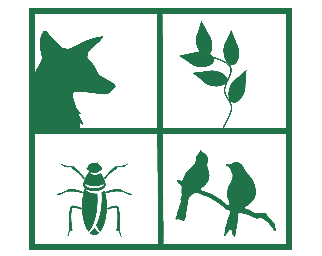Mother’s Day is fast approaching, so let’s appreciate some of the sacrifices that animal moms make for their young!
The Cowbird (Molothrus ater)
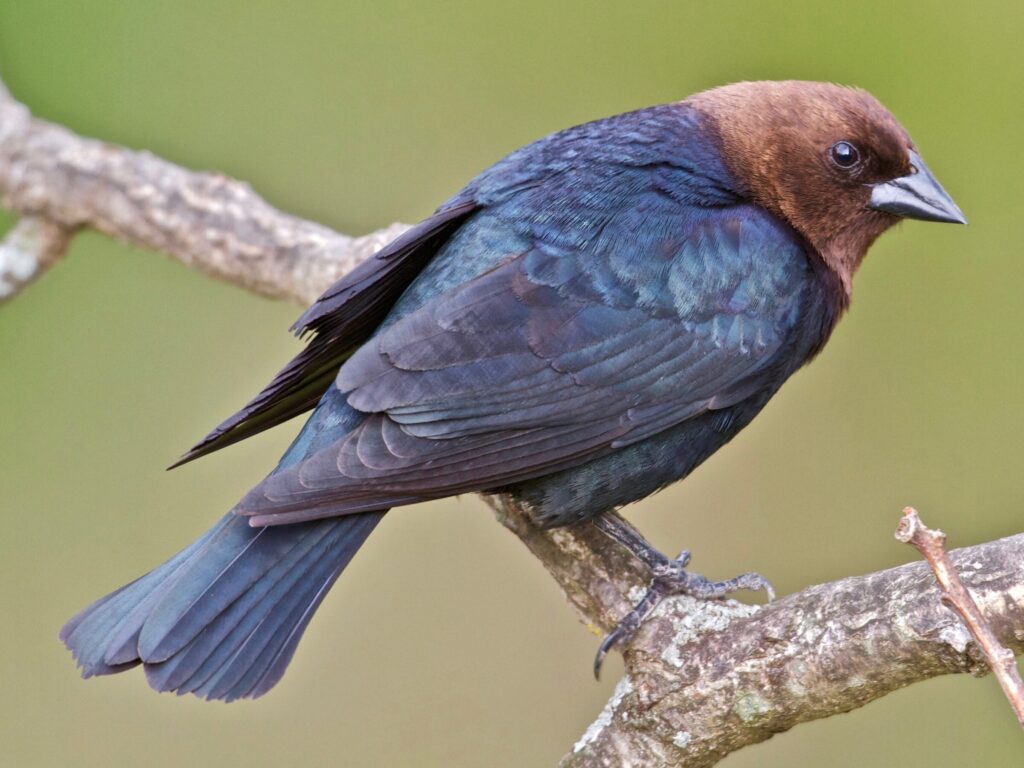
This brown and black bird may look unassuming, but they have taken on a unique approach to raising their young- they don’t! Historically, these birds followed migratory bison across the prairie, capitalizing on the insects disturbed by the bison. Due to their nomadic lifestyle, the female birds put no energy into creating nests or raising young, and instead opt to lay their eggs in other birds’ nests.
Cowbirds lay many eggs- up to 40 in one mating season- and leave them in the nests of over 220 species of birds. When the eggs hatch, the “foster” birds raise the cowbird babies as their own, taking resources from their own young. While they used to be mostly restricted to the prairies, they are now found across North America.

The Orangutan (Pongo pygmaeus and Pongo abelii)

The largest arboreal mammals, orangutans are endemic to the Southeast Asian islands of Sumatra and Borneo. Orangutan mothers invest a lot into their young- in fact, they stick with their young longer than any other land mammal, with infants nursed from their mother for around 6-7 years. They don’t reproduce very often (abt. every 7-9 years) and have one baby at a time. It is common for the young to stay with their mother for over 10 years, watching and learning her survive to learn valuable skills. The older young often help and watch their mother take care of their younger siblings as well. Currently, all species of orangutans are critically endangered due to deforestation and hunting and, unfortunately, the long period between reproduction and the large time investment in their young are contributing factors to the difficulty of their conservation.
The Giant Pacific Octopus (Enteroctopus dofleini)

This giant cephalopod has earned its name, weighing in at about 50 pounds and having a tentacle-span of around 9 feet! These mega creatures don’t start that big, however, and are about the size of a grain of rice when they hatch from their mother’s eggs. This hatching process is no easy task and takes a lot of sacrifice from the mother octopus, usually resulting in its death!
Near the end of the life span of the female octopus, they seek a male mate and reproduce. Before laying their eggs, the mother finds a den or cave and then arranges around 70,000 eggs in strands dangling from the ceiling. As the eggs develop, the mother uses all of her energy and time to douse the eggs in water filled with nutrients and oxygen. She spends about 6 months watching over the eggs until they finally hatch, never leaving her post- not even to get food! Due to the energetically expensive nature of hatching these eggs, the mothers die soon after.
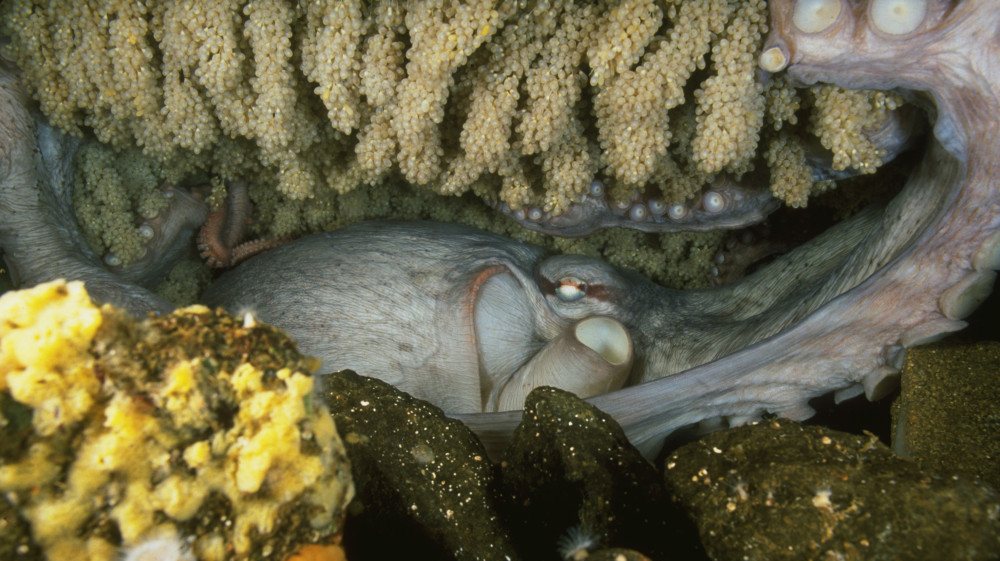
The Strawberry Poison Dart Frog (Oophaga pumilio)
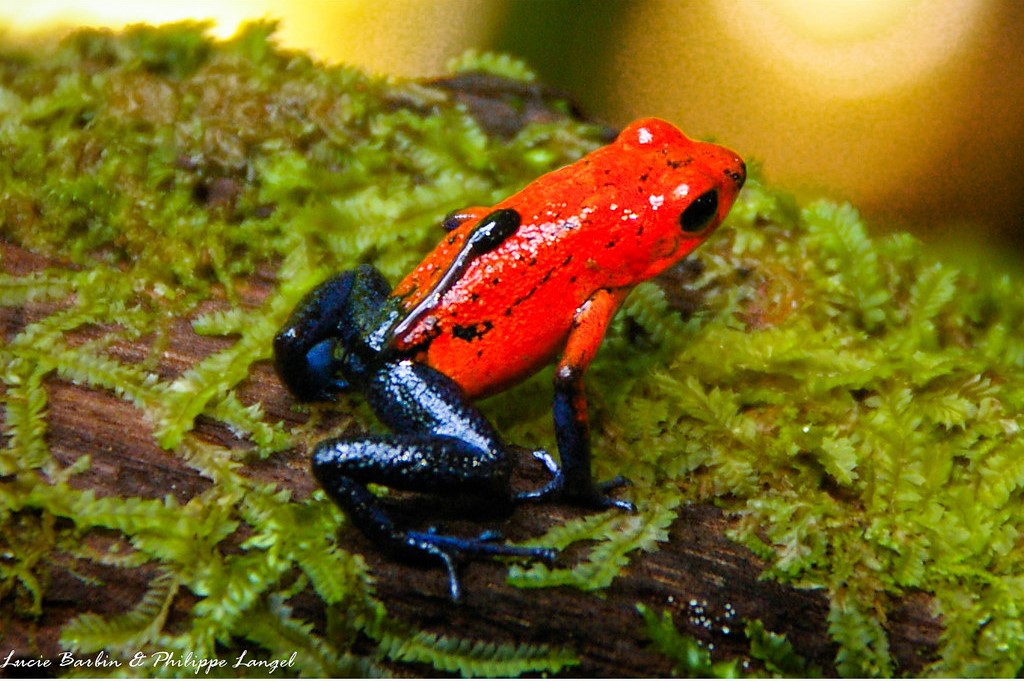
The strawberry poison dart frog may only be about 1-2.5 inches in size, but their motherly accomplishments are no small feat! After mating with a male frog, the females find a moist area close to the ground to lay their eggs (about 3-6 at a time). While the eggs are developing, the mother stays near them, defending them from predators and keeping them moist with her urine. She protects them for about 10-15 days, at which point the eggs hatch into small tadpoles. Once the tadpoles have hatched, the mother must carry each tadpole up a tree until she finds a small pool of water- usually in a cavity or leaf. She repeats this process with each tadpole, trekking them as far as it takes!
The Taita African Caecilian (Boulengerula taitana)

There are many ways that animals feed their young, sometimes through breast milk or spitting food into their mouths. Many caecilian species feed off of their mither’s skin secretions when hatched. Unlike other species, when the Taita African caecilian hatches, they feed directly on their mother’s skin. Don’t worry- it’s no skin off the mother’s back! This specialized approach to feeding young is called dermatrophy and the mothers prepare to feed their babies by developing a layer of thick, nutrient-rich skin, causing no harm to mom when the young feeds. Unfortunately, the Taita Hills region in Kenya of which this species is endemic has had about 98% of its forests destroyed for agricultural reasons, making this species endangered.
Frilled Shark (Chlamydoselachus anguineus)
The living fossil Frilled shark lives about 1000 meters deep in the ocean. Frilled sharks are ovoviviparous, meaning the eggs hatch within the mother and she gives birth to live young. Because they live in such cold, deep environments, their metabolism and other bodily processes are slowed down- a lot. In fact, the Frilled shark has the longest gestation period of any vertebrate which can be as long as 3.5 years! With a total lifespan of about 25 years, they can be pregnant for almost 15% of their life!
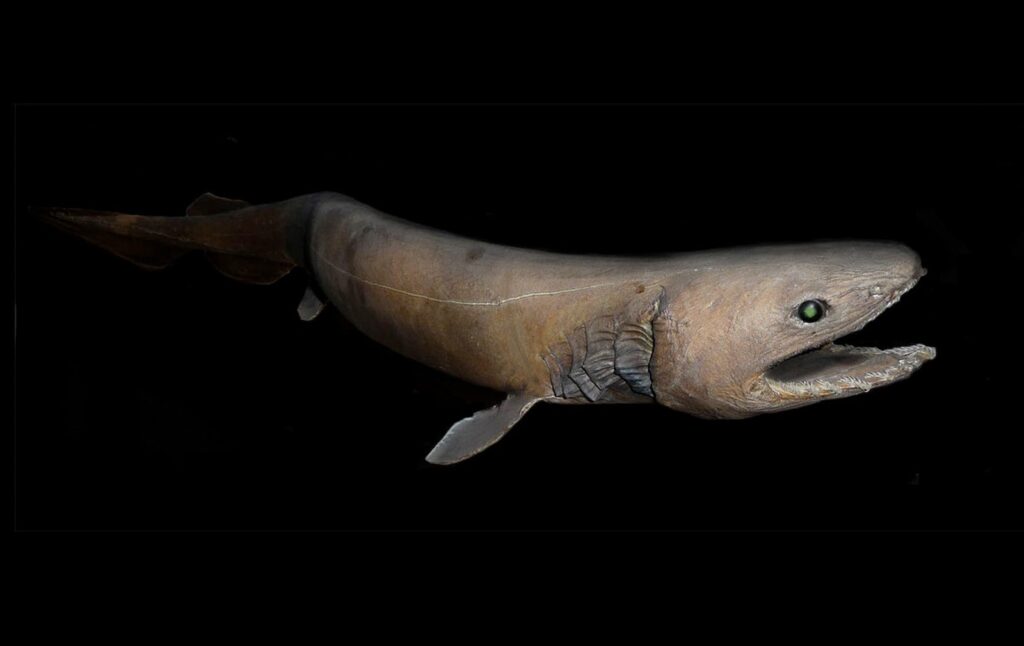
Sources
- Brown-headed Cowbird. 2014 Nov 13. Audubon. https://www.audubon.org/field-guide/bird/brown-headed-cowbird.
- Brown-headed Cowbird Overview, All About Birds, Cornell Lab of Ornithology. wwwallaboutbirdsorg. https://www.allaboutbirds.org/guide/Brown-headed_Cowbird/overview#.
- Frilled Sharks ~ MarineBio Conservation Society. 2017 May 18. [accessed 2023 Apr 30]. https://www.marinebio.org/species/frilled-sharks/chlamydoselachus-anguineus/#:~:text=Frilled%20sharks.
- Giant Pacific Octopus. Oceana. https://oceana.org/marine-life/giant-pacific-octopus/.
- Giant Pacific Octopus. 2021. Montereybayaquariumorg. https://www.montereybayaquarium.org/animals/animals-a-to-z/giant-pacific-octopus.
- Lashaway A. Chlamydoselachus anguineus (Frill shark). Animal Diversity Web. https://animaldiversity.org/accounts/Chlamydoselachus_anguineus/.
- Orangutan. 2016 Jun 6. Smithsonian’s National Zoo. https://nationalzoo.si.edu/animals/orangutan.
- Strawberry Dart Frog. Smithsonian Institution. https://www.si.edu/newsdesk/snapshot/strawberry-dart-frog.Whittaker K. 2017. AmphibiaWeb – Boulengerula taitana. amphibiaweborg. https://amphibiaweb.org/species/1837.
Photo Sources
- Cowbird: https://ebird.org/species/bnhcow
- Baby Cowbird: https://www.sialis.org/cowbirdphotos.htm
- Orangutan:https://theconversation.com/how-orangutan-mothers-help-their-offspring-learn-173959
- Giant Pacific Octopus:
- https://www.montereybayaquarium.org/animals/animals-a-to-z/giant-pacific-octopus
- Giant Pacific Octopus with Eggs: Stuart Westmorland/Corbis https://www.npr.org/sections/krulwich/2011/06/02/136860918/the-hardest-working-mom-on-the-planet
- Strawberry Dart Frog: https://www.flickr.com/photos/lucie_et_philippe/4011702797
- Taita African Caecilian: © 2006 John Measey https://calphotos.berkeley.edu/cgi/img_query?seq_num=184067&one=T
- Frilled Shark: https://oceana.org/marine-life/frilled-shark/
